In 1839, argentiferous galena with a high concentration of silver had been found in the Sierra Almagrera in Barranco Jaroso, Cuevas de Almanzora, Almeria, Andalucia
By Nick Nutter | Updated 5 Mar 2022 | Almería | Walking |
Login to add to YOUR Favourites or Read Later
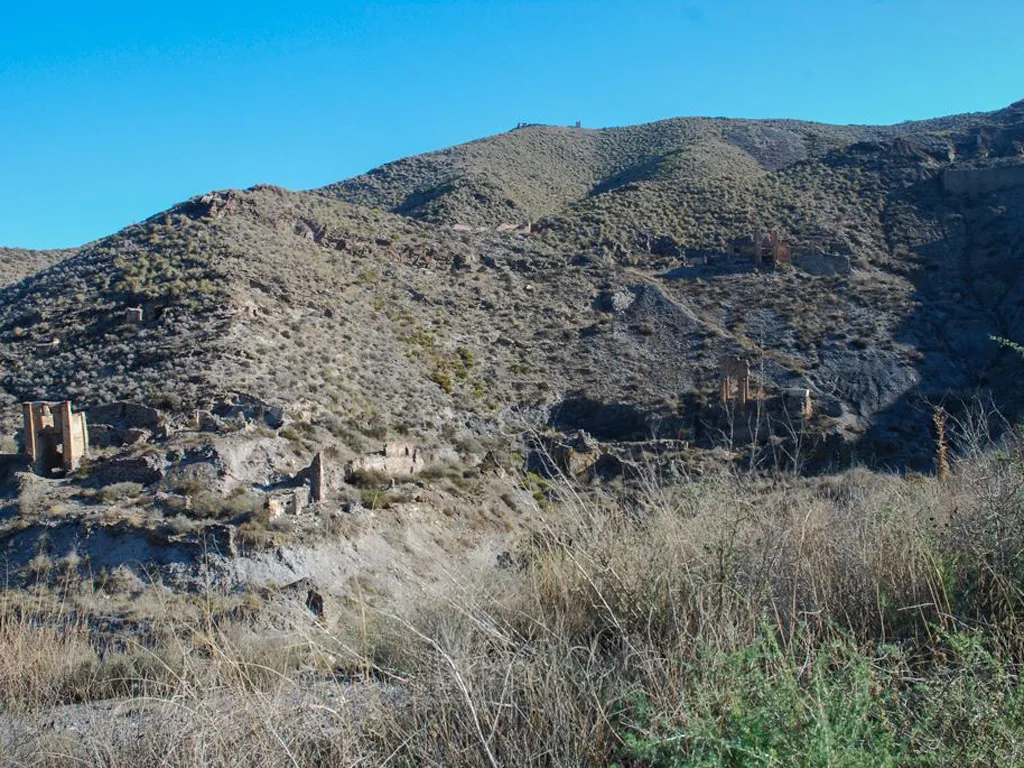
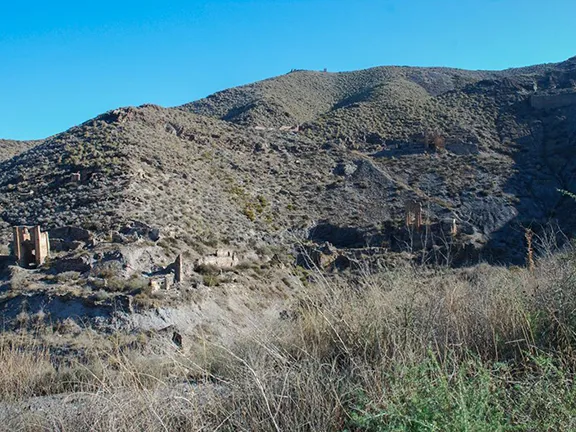
Mines in Barranco Jaroso
In 2004, the Mars rover named Opportunity, discovered the mineral jarosite in the Meridiani Planum, an equatorial plain, on the planet Mars. On Earth, jarosite has been found to form in acid mine drainage environments, during the oxidation of sulphide minerals, and during alteration of volcanic rocks by acidic, sulphur-rich fluids near volcanic vents. Jarosite formation is thought to require a wet, oxidizing and acidic environment. But jarosite on Earth only persists in arid environments because it rapidly decomposes to produce iron oxides (rust) in more humid climates. OK so, parts of Mars at least, were once wet, now they are bone dry and have been for a very long time. Exciting stuff, and then I read that jarosite had been discovered in the Sierra Almagrera in the 19th century. Somewhere along the way I discovered that the Mars rovers had been tested in the Mars like terrain found in various parts of Andalucia such as the Rio Tinto mining area over in Huelva province.
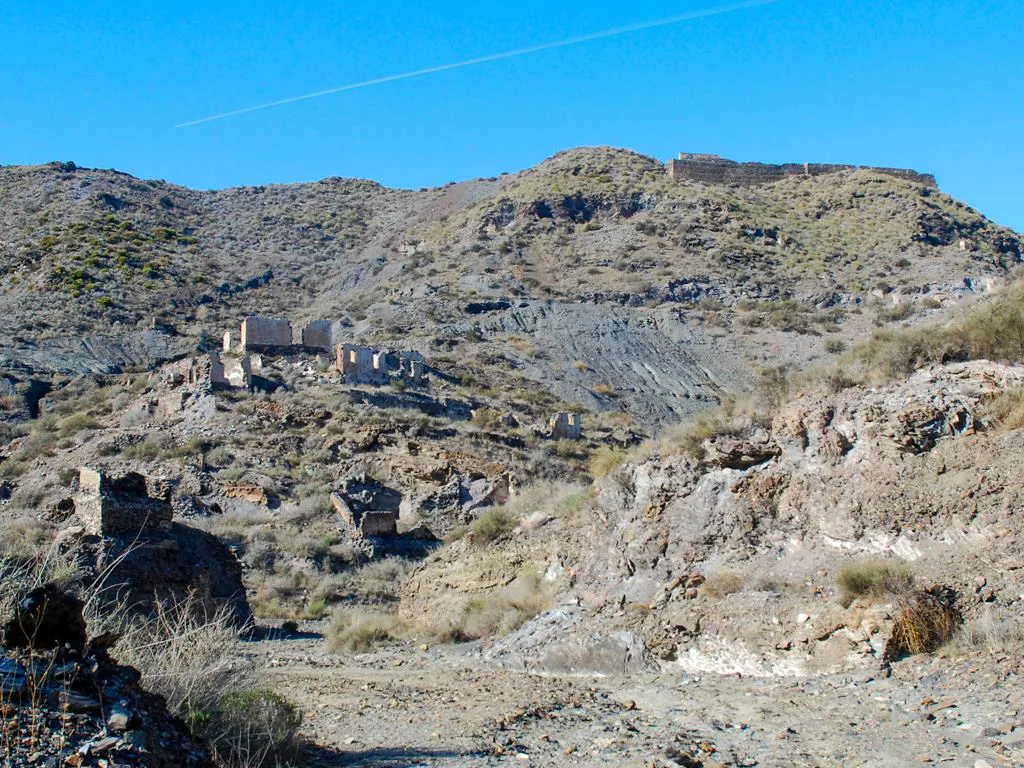
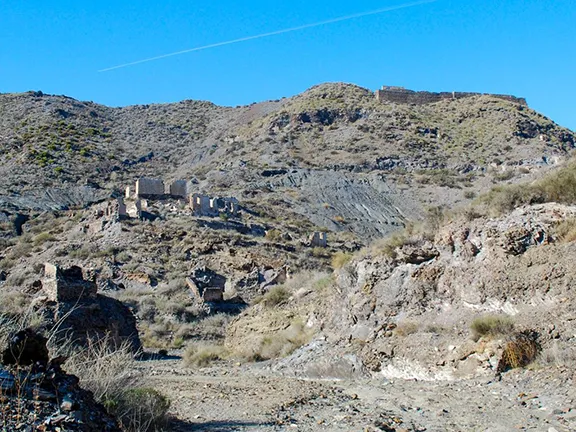
Mines in Barranco Jaroso
What has all this geological, interplanetary stuff to do with this walk? You may well wonder. It was the jarosite you see. I wanted to find the source of this mineral that had caused such a kerfuffle within the NASA community. The fact that Andalucia had such close ties with Mars was only a good omen. First let’s find out a little more about where we should be looking.
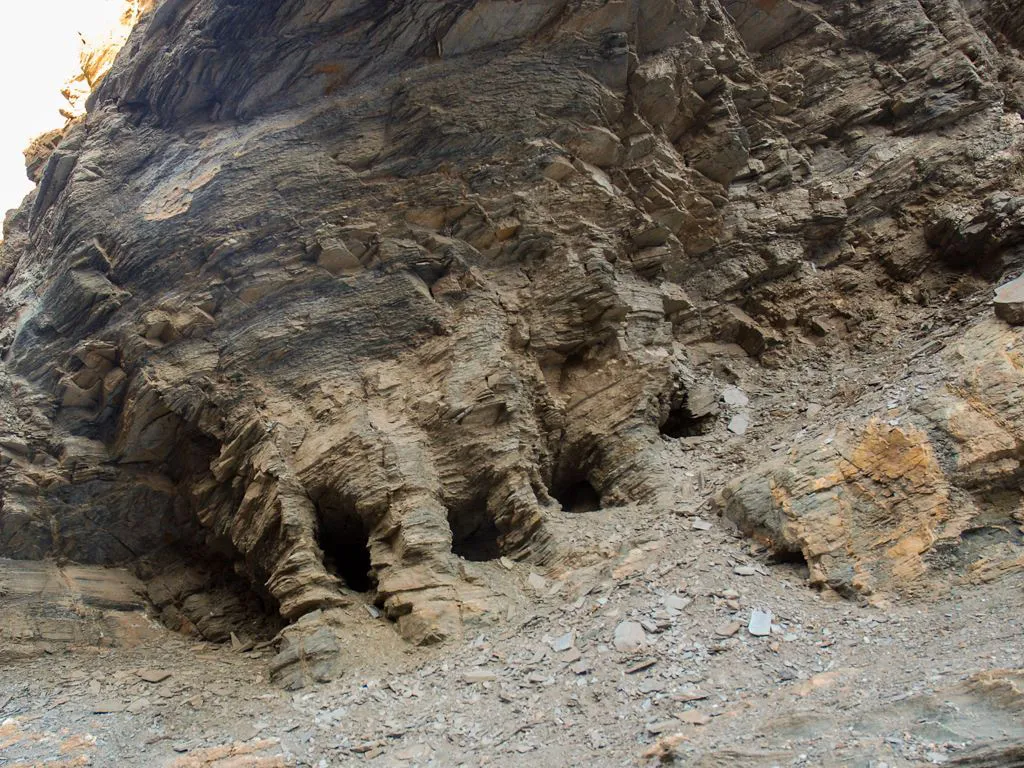
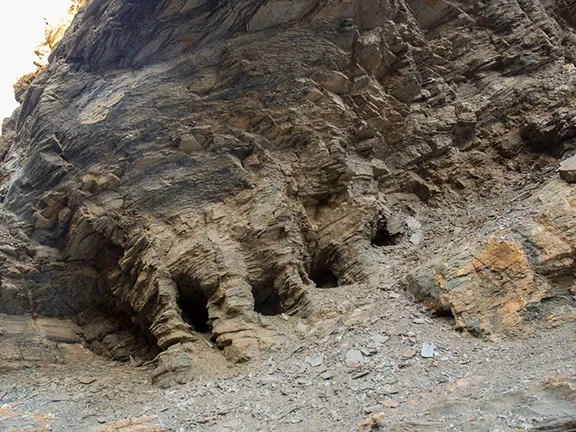
Erosion in slate Barranco Jaroso
The Sierra Almagrera runs parallel to the Mediterranean coast from Villaricos, 12 kilometres, to Pozo del Esparto, the coastal border between the provinces of Murcia and Almería. In 1839, argentiferous galena with a high concentration of silver had been found in the Sierra. According to the story, ore was discovered by a poor weaver called Valentin from Cuevas de Almanzora, who was out shooting rabbits, he observed anomalies in the rock and concluded that the ground must contain ore. He dug around in the Barranco Jaroso and quickly found a lump of ore. It was beyond his means to test it, so he took it to a smelter in Granada, where it was identified to be silver-rich lead. Being penniless, he brought his discovery to the attention of Soler, a rich fellow townsman, who eventually with fellow adventurers established the El Carmen mine in the Barranco. The mine proved exceedingly rich, and Soler quickly established further mines in adjacent areas. Soler went on to become a prominent name in the mining industry in Almeria. Of Valentin, nothing further is heard.
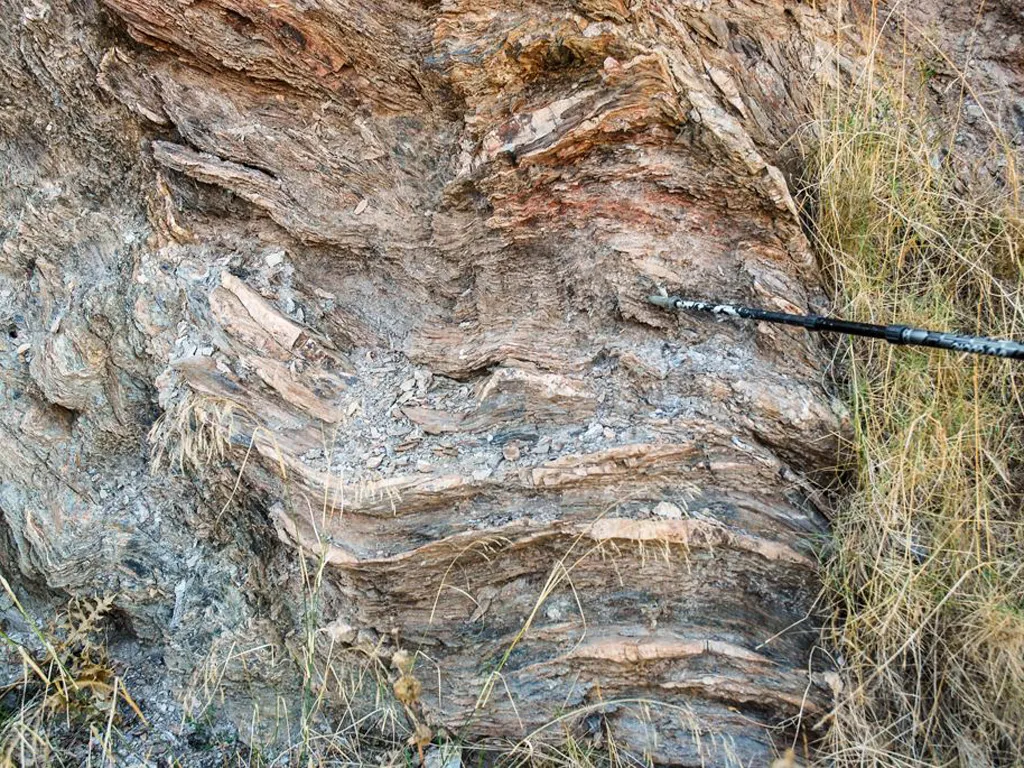
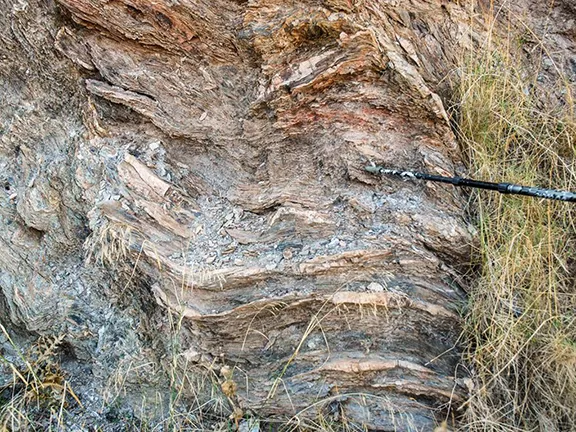
Folded strata Barranco Jaroso
Google Earth showed me that the Barranco Jaroso runs from near the top of the Sierra Almagrera down the north west side of the hills, taking a circuitous route that eventually debouches into the barranco at Los Lobos. As far as I can tell, the barranco is called Calle los Especieros and is indeed used as a vehicular thoroughfare. It must have some water in it occasionally, judging from the washed away bridge at Los Lobos that took Calle Principal safely across the barranco, until a particularly rainy day in 2012 that is. Mental note to myself, ‘Never buy a house in th’ dip’.
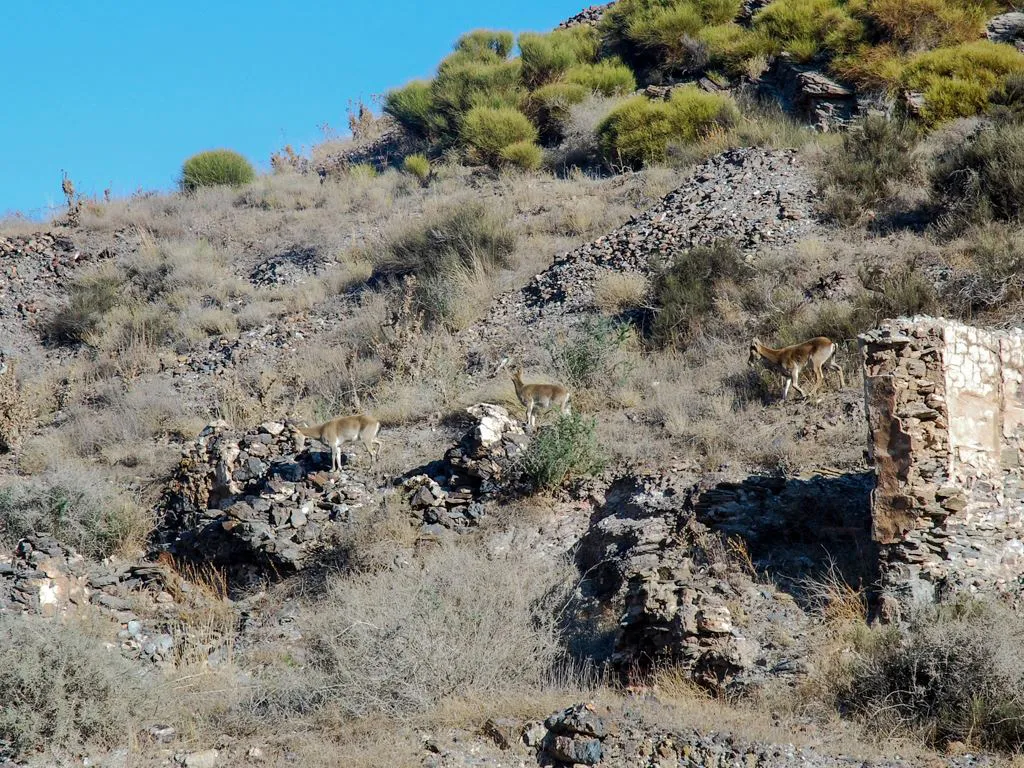
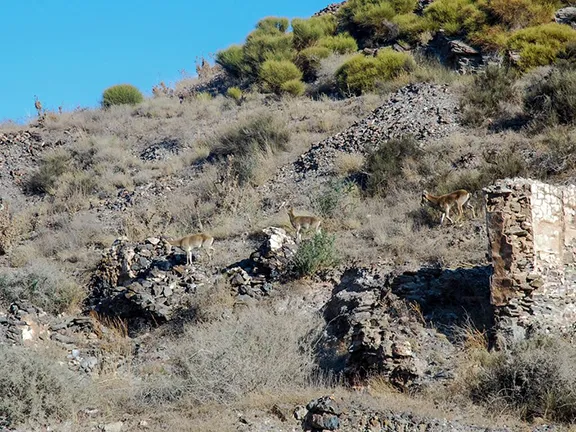
Ibex family Barranco Jaroso
There are a few place in Almeria that include the word ‘lobos’, wolf. Whilst some of them undoubtedly indicate that wolves were in evidence at one time, the name attached to this village, midway between Cuevas del Almanzora and San Juan de Los Terreros, has nothing to do with wolves or any other animal for that matter. The village was founded in 1840 by workers from the every increasing numbers of mine workings in the area. Along came a man from Cartagena who established what became quite a famous venta on what was then the main road between Cuevas del Almanzora and Aquillas. Mine host was nicknamed ‘Tío Lobos’, ‘Uncle Wolf’. Nobody else could think of a better name so the village became known as Los Lobos. But, I digress, again. Back to the walk.
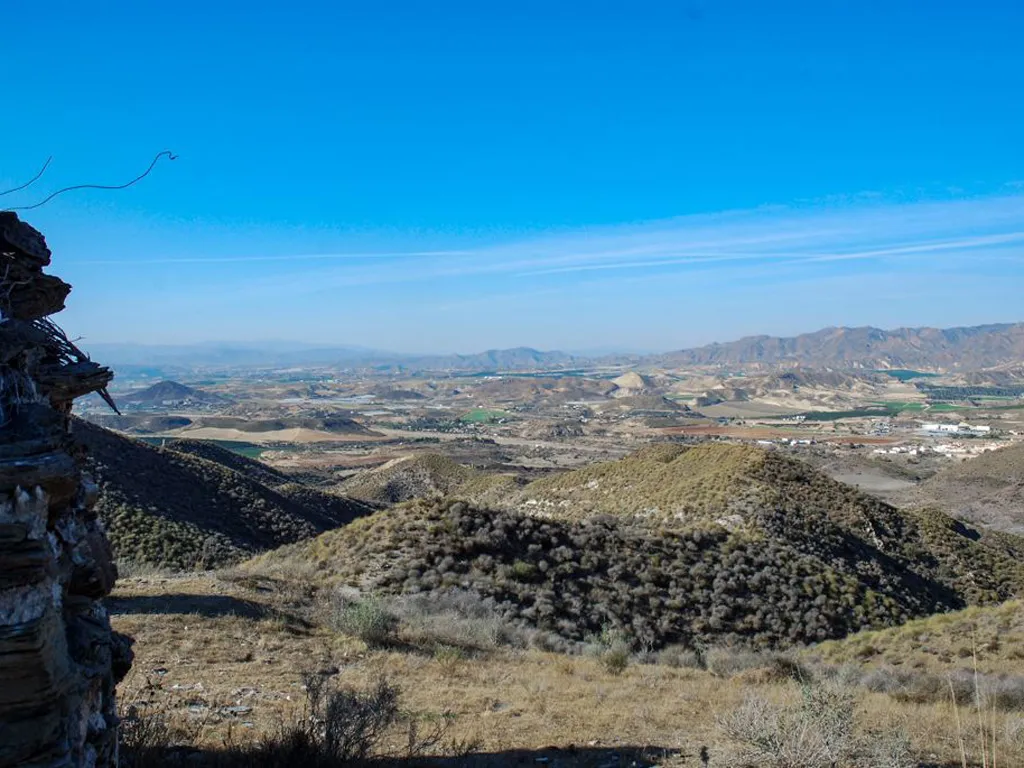
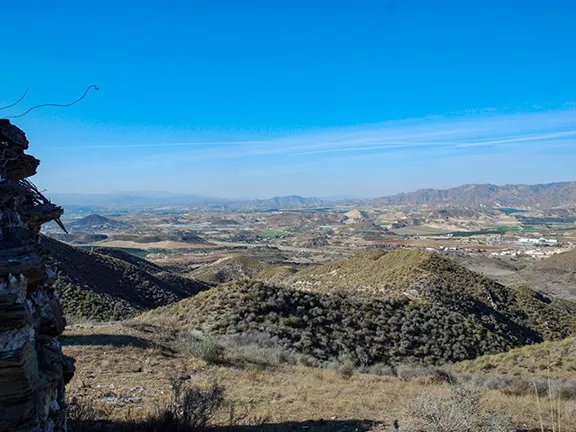
View over Los Lobos
Park up somewhere near the stub end of the bridge at Los Lobos. Directly south of you, on the opposite side of the barranco, Calle los Especieros, you will see a track disappearing up a smaller barranco and heading in an easterly direction. This is the Barranco Jaroso and the easiest way to the mines towards the top of the barranco is via what must have been the mining road levelled off back in the 1840s. I will not mention the route again because it stays on this well defined track either in or just on the edge of the obvious barranco to your left. It is about 3 kilometres to the mine workings and about another half kilometre to the top of the ridge from which you have a panoramic view of the mines either side of the barranco and, to the southeast, a fairly steep drop off right down to the sea. You can see the line of the remains of the concrete pylons that supported the aerial cableway that took the ore, in hoppers, up to the top of the ridge from the mines, through a ‘notch’ cut into the ridge, and down to the foundries on the coast.
There are any number of adits up here, not to mention holes in the ground, so if you do wander off to explore the crumbling ruins, stay on obvious paths. One path takes you from the mining area off to the west, up a hill. There are two, surprisingly large, shafts up here. One has a grate across the top, the other does not.
The buildings, or what remains of them, are fascinating. Many were built of whatever local stone there was in the area, mostly undressed, bound together with mud or clay and then rendered in the same mud or clay. Some remaining walls show signs of having been limewashed. These buildings were obviously thrown up on the cheap. The more substantially built edifices, that have lasted in better condition, were to house the engines and mining machinery. The modern looking plinths, some concrete, that march up the hills are the base of the pylons that supported the aerial cableway beneath which were suspended the hoppers carrying the ore. The cableway passed between the substantially built parallel stone walls that still remain. The deep, stone lined pits you will find retained the water that was captured by any number of ingenious methods including channels dug across the side of the hills, resembling the ancient agricultural terracing found elsewhere. The deep stone lined pits with a vertical front facing the barranco, with holes therein are the ore storage hoppers.
The track cuts through rock that in places is impressively folded, evidence of the massive tectonic pressures still being exerted by the northward march of the African tectonic plate into the Eurasian plate.
The burning question. Did I find jarosite and silver bearing ore? The answer is yes, maybe and no. I think there has been some confusion in the literature over the years as to what exactly has been found in this Sierra. Jarosite is a sulphate, hydroxide compound of iron and potassium. It is a sulphur yellow colour. There is plenty of material matching that description but in the form of crustal deposits. I did not find any crystals of any size and a lot of what I was seeing could easily have been lignite, an iron oxide. Like our weaver Valentin, I cannot afford to have samples sent off for analysis. There is however any amount of very heavy for its volume, siderite and goethite. Iron ore, strictly speaking iron carbonate and iron oxide respectively, all massive deposits with no crystals in view. I think that Valentin probably found a, rarer in this particular vicinity anyway, ore called galena. Galena is lead sulphide that is sometimes found with 1 or 2% silver. I would be fascinated to find the assay analysis of the lump Valentin found. No, I did not find any galena but I will be back.
The mineral list for the Barranco Jaroso is extensive, covering various compounds of iron, copper, lead and zinc, a veritable playground for the budding mineralogist.
Did I mention the ibex? Through most of the walk and foraging in the spoil heaps, we were being watched by a family of curious ibex. Wonderful to see in the wild.